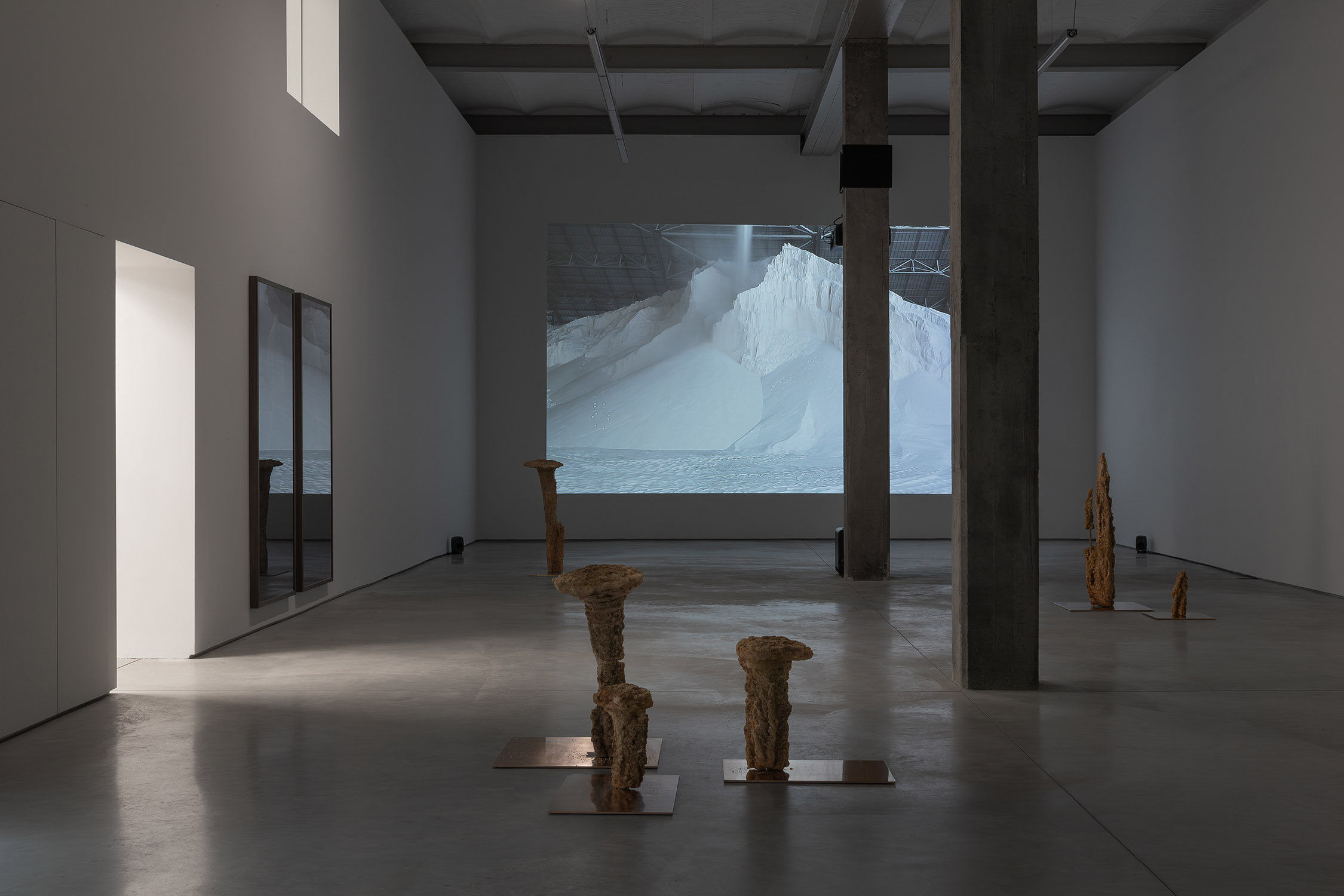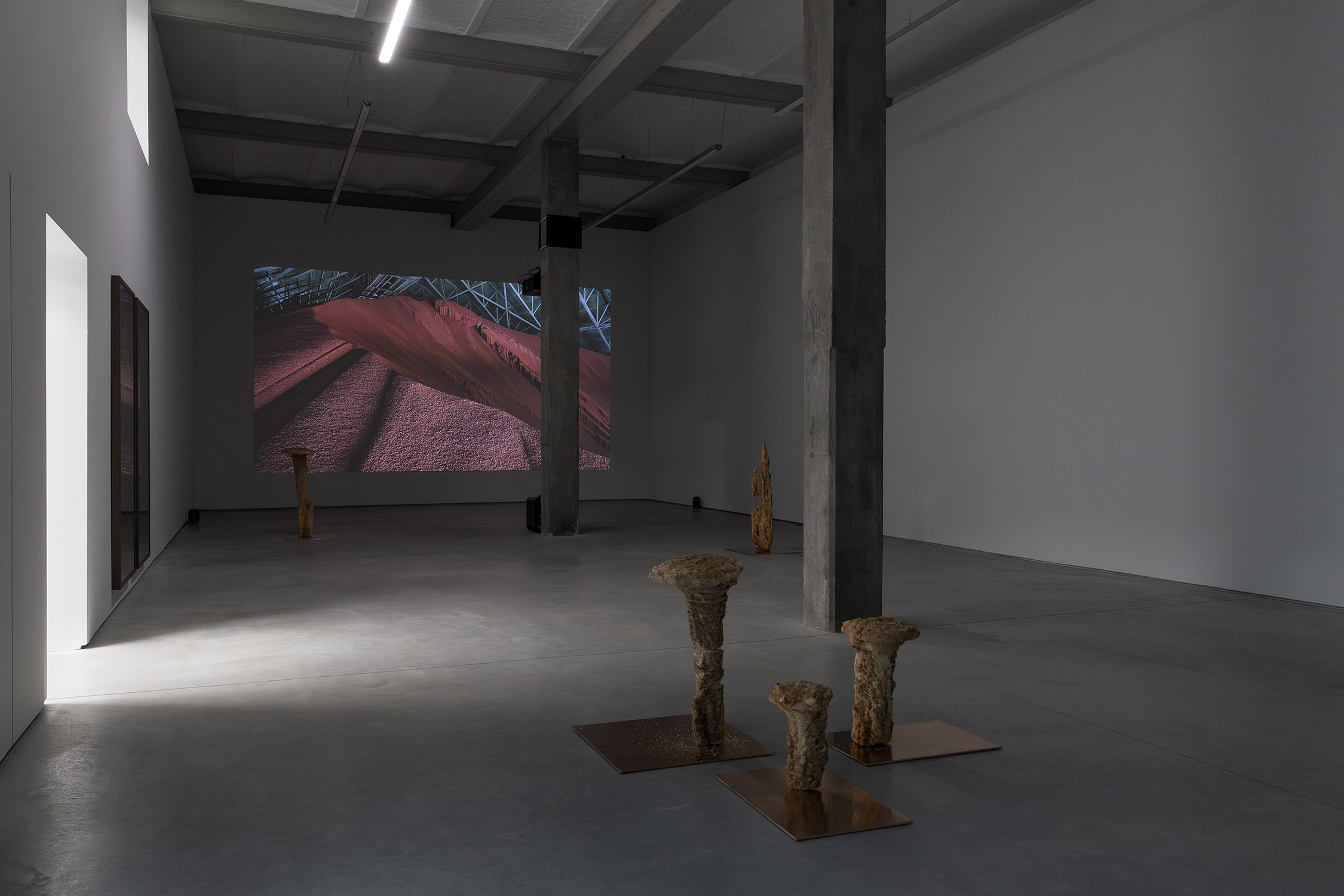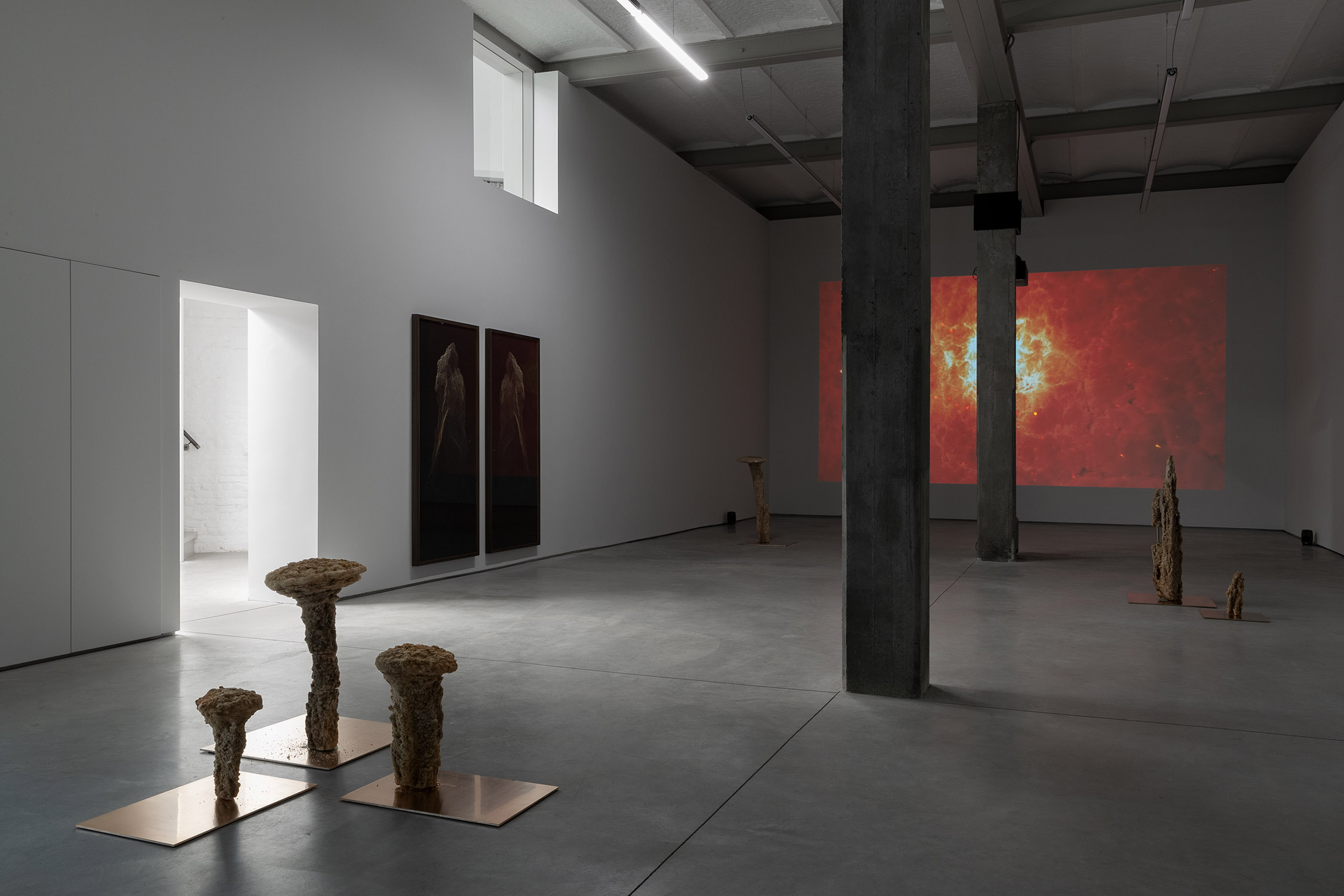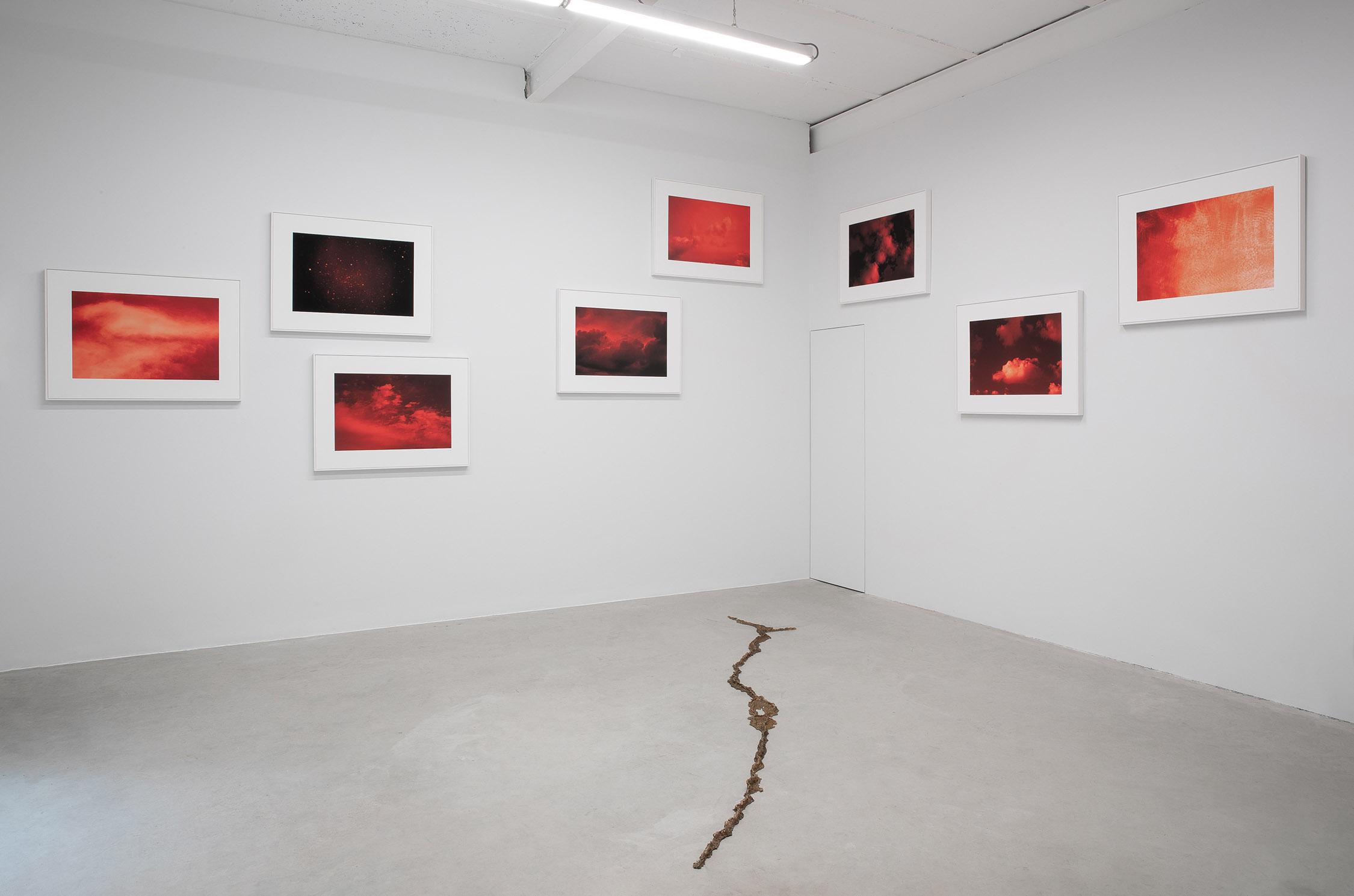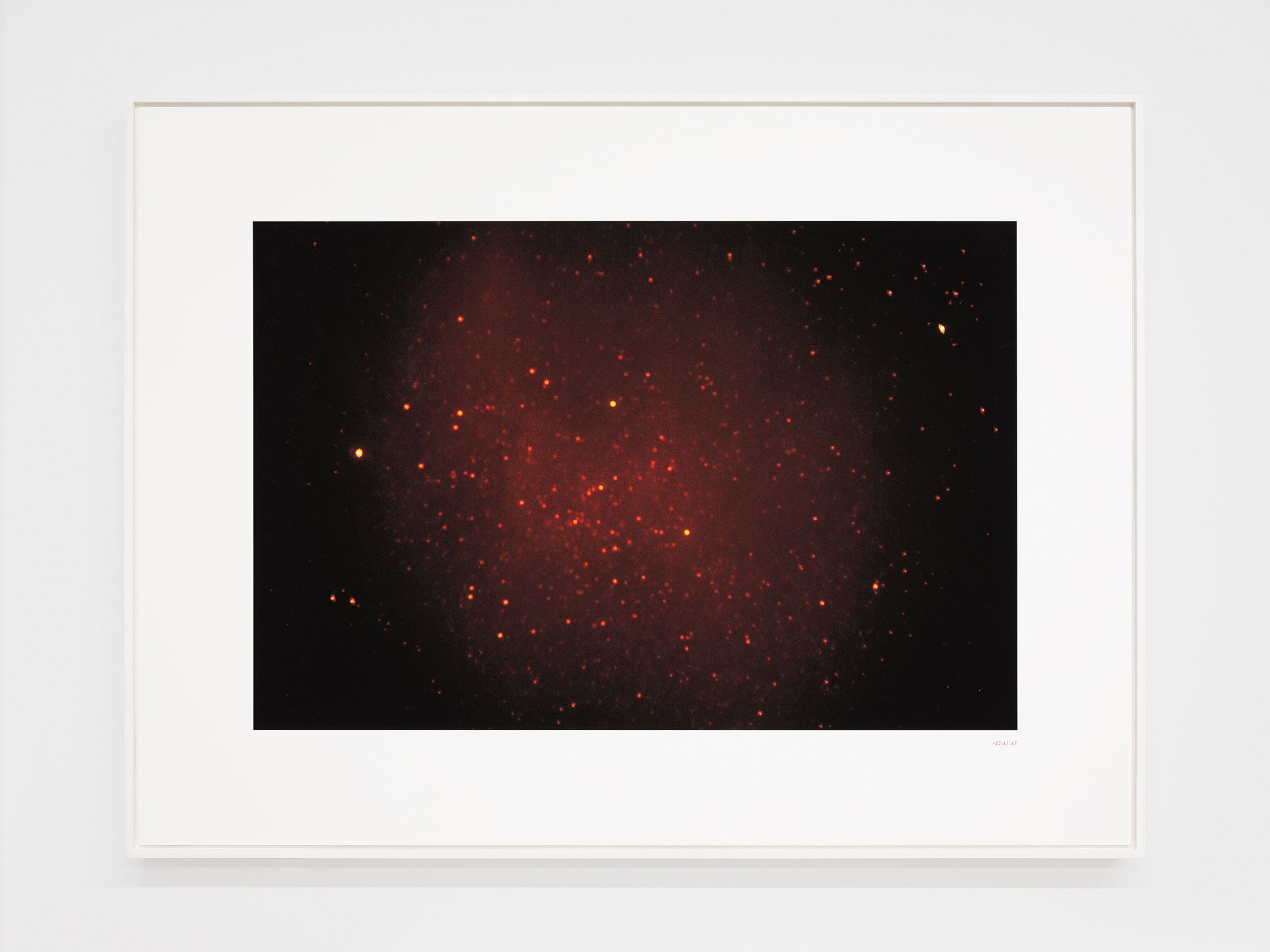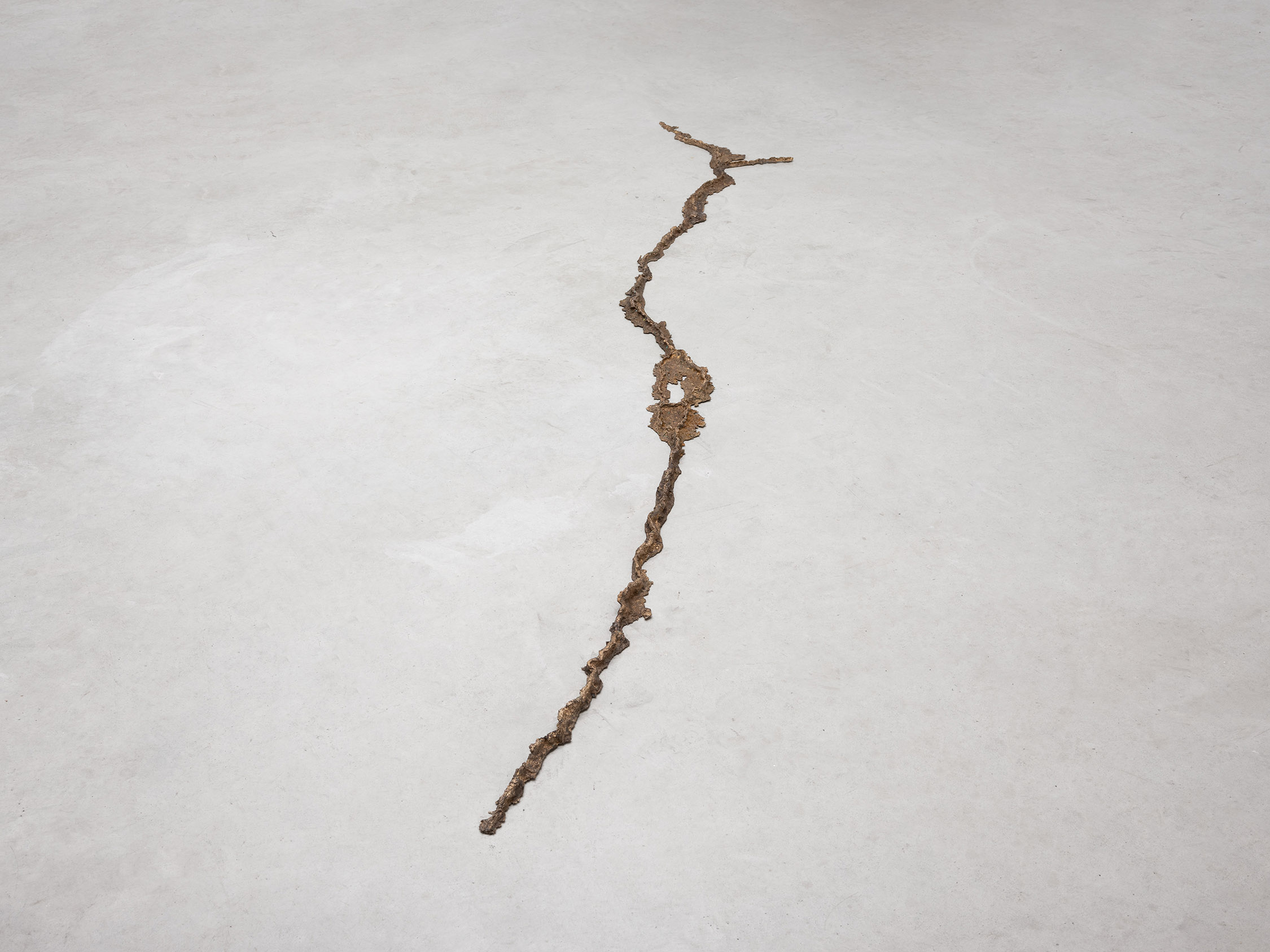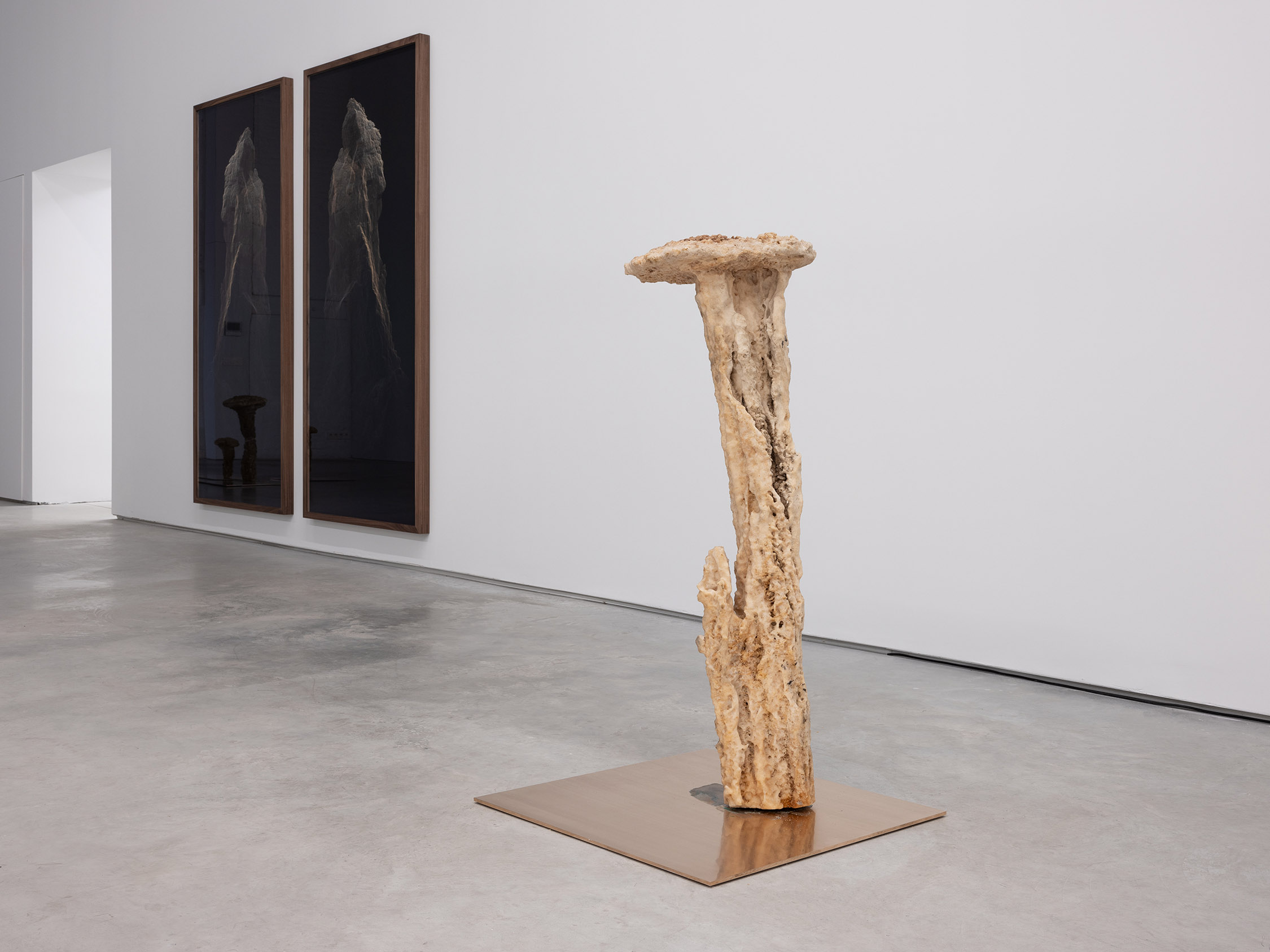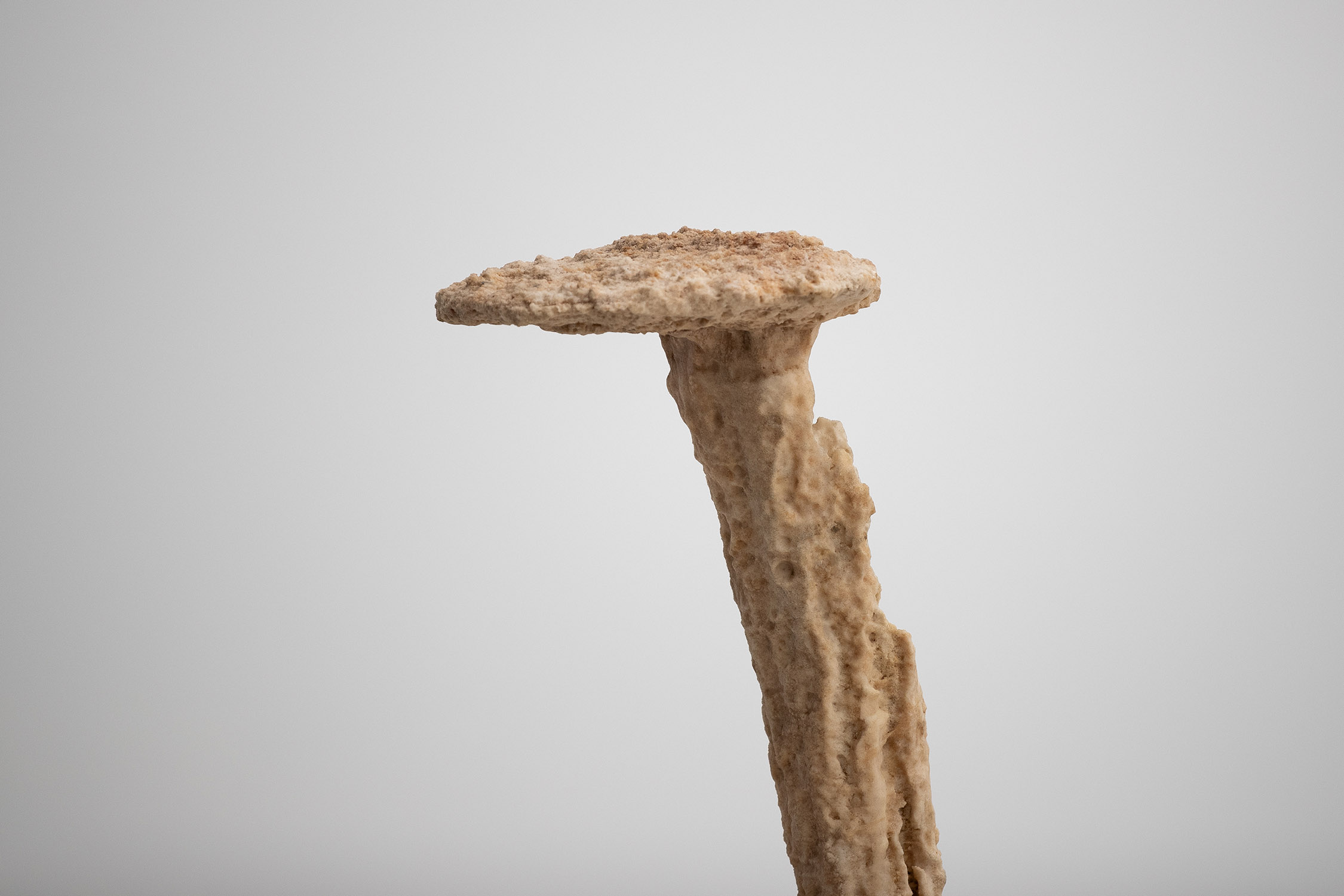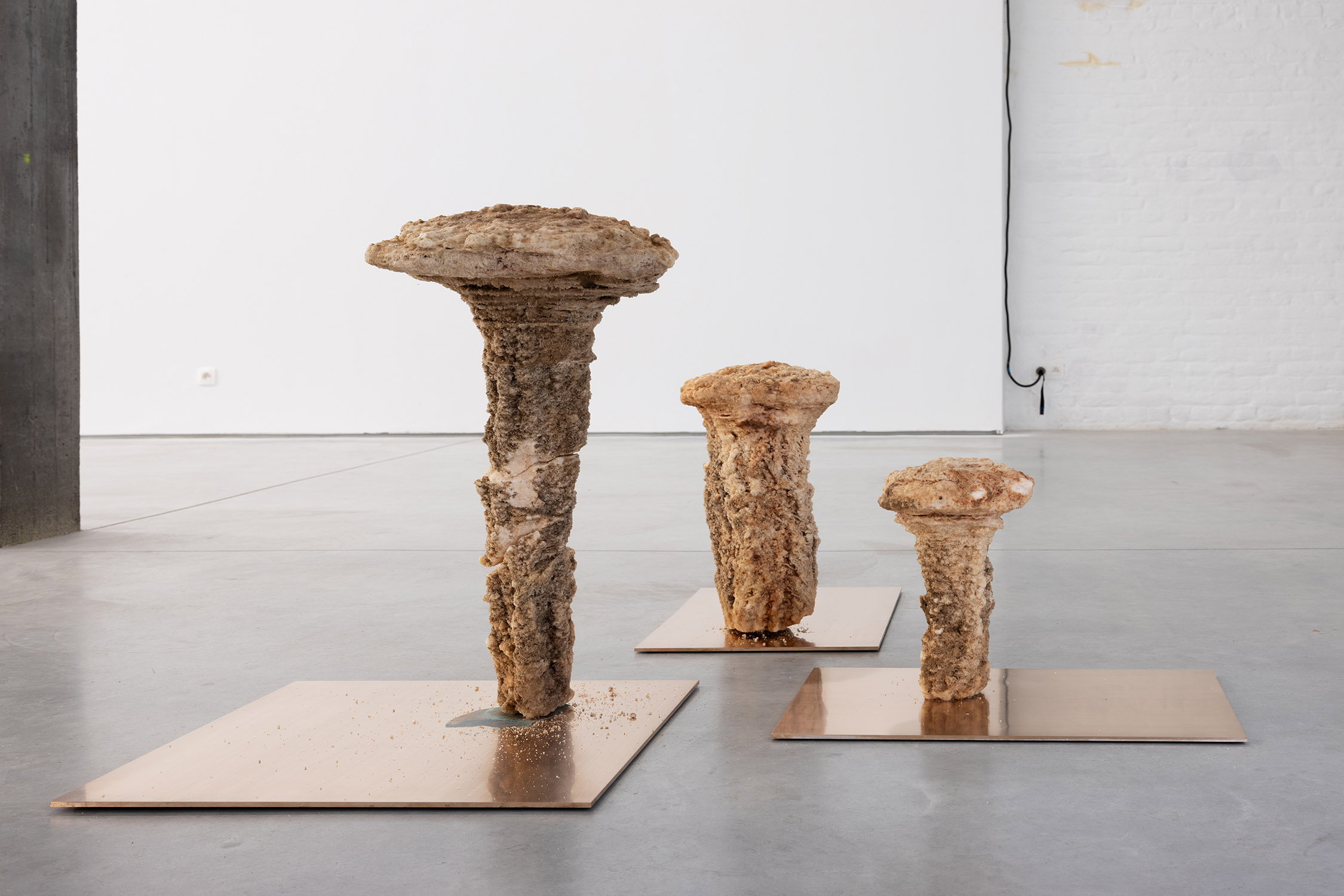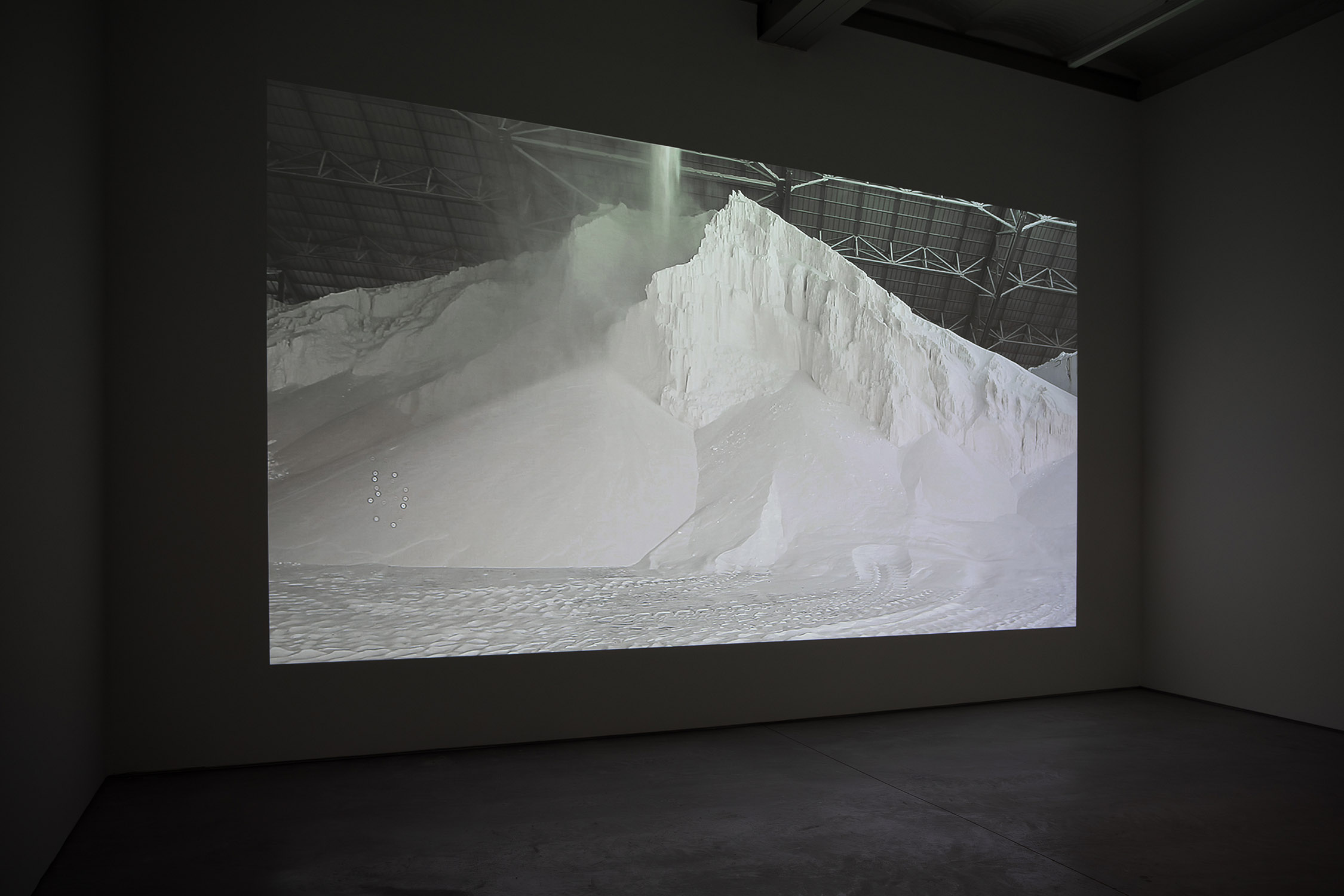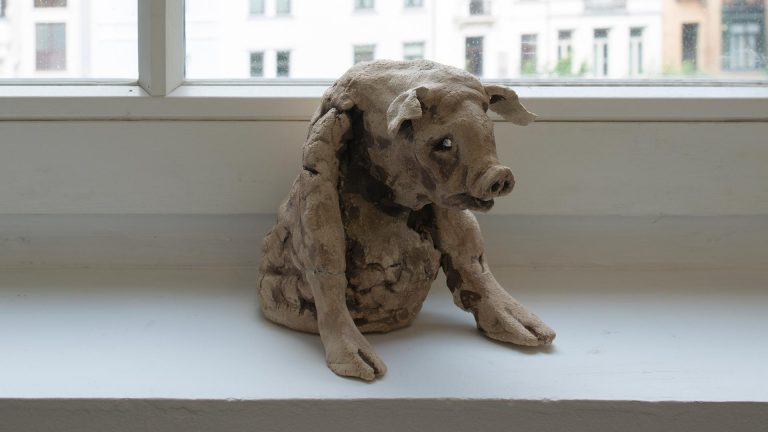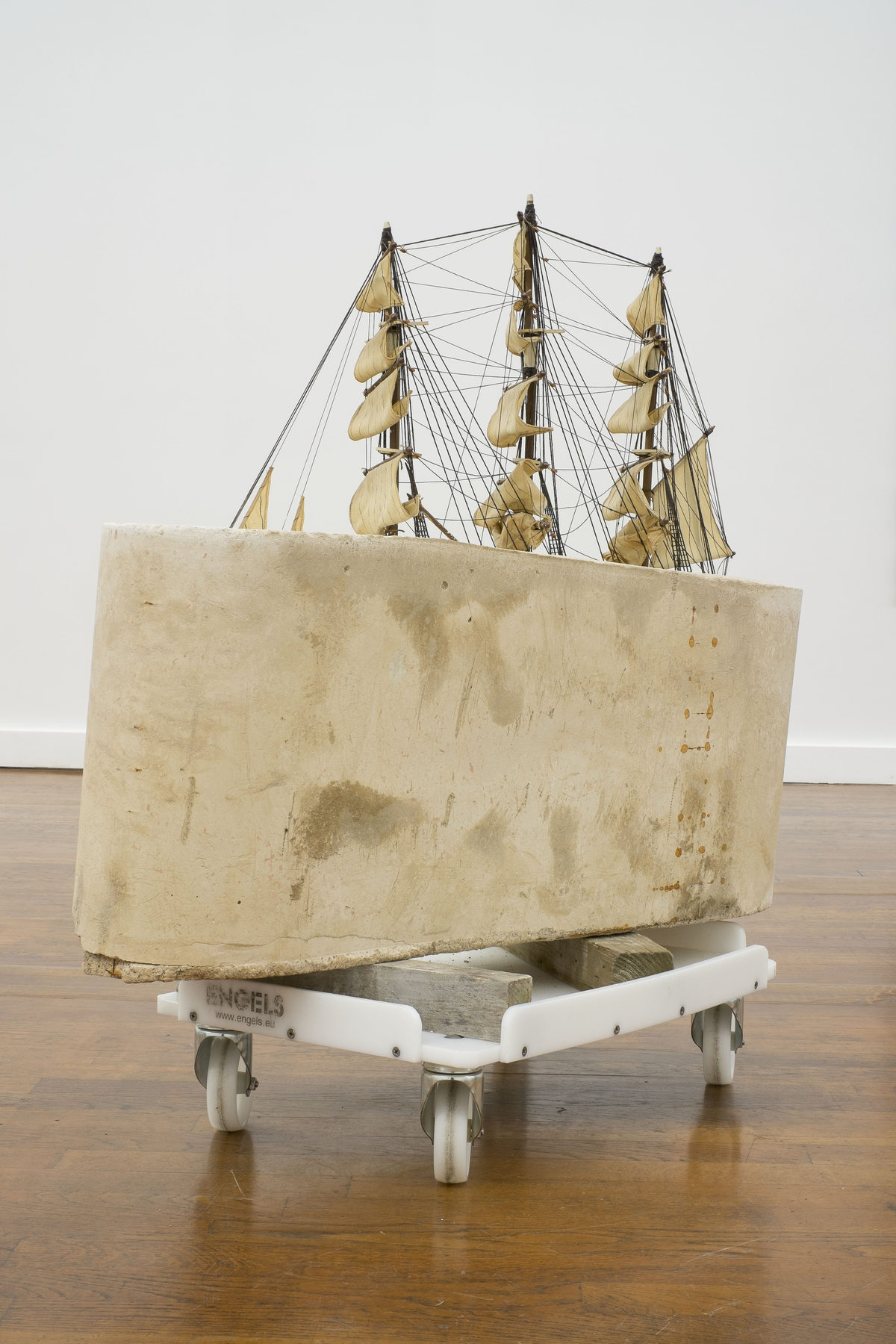Artist: Ella Littwitz
Exhibition title: The Day the Sky Hung Low
Venue: Harlan Levey Projects, Brussels, Belgium
Date: April 14 – June 15, 2024
Photography: all images copyrighted and courtesy of the artist and Harlan Levey Projects, Brussels
The Day the Sky Hung Low, Ella Littwitz’s second solo exhibition at Harlan Levey Projects, revisits the deserted geography around the Dead Sea, which has inspired her practice for nearly a decade. It is in this inhospitable setting that she fnds extreme geography, geologic forces, and characteristics in the shifting landscape that inform her work as they lead her to refections on the political, social, historical and cultural realities in the region.
The centerpiece of the exhibition, a new video titled Ontology of the Void, ponders the way millennia-long terrestrial processes are echoed in politics, addressing a geological timescale as a means to think about the intractable conficts of the present. This metaphor is narrated as the viewer watches accumulating piles of potash, a material that has been extracted from the waters of the Dead Sea, while an ROV deposits an ingot of magnesium in the sea-bed. This metal ingot, made of minerals extracted from that same location, in being returned to the original source will soon dissolve again. Underlying this extractive frenzy, the Dead Sea itself is rapidly disappearing. The name of this terminal lake, which was once a metaphor for the impossibility of life to exist in such salinity, is rapidly becoming prophetic.
The image of the artist rappelling down an 80-meter deep chimney-like cave in Mount Sodom was flmed with a 360-degree video camera, which gives the impression that she is foating in a time-and-space warp. As she descends, the narrator tells the tale (and possible geological future) of the biblical mountain of Sodom, “a symbol of society that sinned and was destined for destruction.” We learn that as the mountain grows throughout the ages, the future erosion will release Lot’s wife (an existing, almost abstract rock formation on the banks of the Dead Sea) from her eternal punishment. Apocryphally called Edith, Lot’s wife was turned into a pillar of salt as punishment for looking back to the destruction of Sodom and Gomorrah (Genesis 19). The two mirrored images that comprise the work Edith are made out of 3D scans of the actual salt pillar facing itself. One of the images is looking “backwards” The other, by looking the opposite way, must be looking “forwards”. One looks to a past of destruction, the other then looks at an uncertain future, but it remains to the viewers to decide which way each is looking – and what exactly would be the diference between the past and the future, between what one Edith and the other are contemplating.
All other works in the exhibition present geological features that are also a metaphor to subjective sentiments and experiences. Longing is the bronze cast of a crack in the ground. The exact origin of the crack is irrelevant, as the title clearly refects an emotional and social state of “cracking” rather than a geological one. Likewise, the
work Tears presents three sculptural crystals that were taken from the bed of the Dead Sea. These are columns of salt that grow invisibly until they reach the water surface and the sun. When they are uprooted, and displaced, the salt that forms them starts slowly crying. These “tears”, when dripped onto the bronze base, will trigger another eternal process of oxidation, with the salt column itself ultimately disappearing.
The most personal works in the exhibition are perhaps a series of photographs titled The Day the Sky Hung Low. Through a complex process, Littwitz used a photographic camera sensitive only to light outside of the visible spectrum. In this way, the photographs of the sky record the unseen radiation. These images were produced in relation to a disease the artist contracted from exposure to radiation while undergoing radiation treatments that helped her body heal. The title recalls the sense of the sky falling on one’s head when confronted by life-threatening circumstances. The sky, of course, never actually falls at all. There is a dissonance between physical and emotional realities, disappointment when one doesn’t change with the other. Under each unique print is a time stamp. A bit like a doomsday clock, the numbers show the hours and minutes counting down to midnight, the end of the day the image was taken.
All the works presented relate to movement and dynamism: elements that grow up from the sea bed, cracks that emerge, descending into darkness, staring up to the sky. With varying degrees of futility, all search for the invisible and ungraspable processes that take place inside the tiny microcosms of cells in our bodies, as well as in millennial geological processes. When unchecked and unseen, all of these long processes will end in a catastrophic collapse.
By Sergio Edelsztein
About the Artist
Ella Littwitz is a laureate of the HISK- Higher Institute for Fine Arts in Ghent (BE) in 2015 and received her BFA from Bezalel Academy of Arts and Design (Jerusalem, IL) in 2009. Her work has been acquired by The Israel Museum (Jerusalem, IL), Kunsthaus Zürich (CH), Vehbi Koç Foundation (Istanbul, TR), Tel Aviv Museum of Art (IL), S.M.A.K., the Municipal Museum of Contemporary Art – Ghent (BE) and the Centre Pompidou (Paris, FR).
Littwitz’s solo exhibitions include those at CCA Tel Aviv (IL), Kunsthalle St Gallen (CH), La Panera Art Center (Lleida, ES), MWW Muzeum Współczesne Wrocław (PL), Basis (Frankfurt, DE), Petach Tikva Museum of Art (IL) and in August 2024 at Haifa Museum of Art (IL). Her works have also featured in exhibitions at the Kunsthaus Zürich (CH), EMST – National Museum of Contemporary Art Athens (EL), MOCAK Museum of Contemporary Art in Krakow (PL), the 12th Istanbul Biennial (TR), The Israel Museum (Jerusalem, IL), Tel Aviv Museum (IL), Tallinn Kunsthal (EE), Haus am Lützowplatz (DE), Haifa Museum of Art (IL), Jafa Museum (Tel Aviv, IL), and Arter Istanbul (TR).
Littwitz received grants and prizes from the Plumas Foundation (2023), the Dr. Georg and Josi Guggenheim Prize (2018), the Botin Foundation Prize (2012), the Igal Ahouvi Art Collection Promising Artist Award (2013), the Artis Grant for Exceptional Work in Uncertain Times (2020), and the Stiftung Kunstfonds (2012).
Littwitz lives and works in Tel Aviv – Yafo, Israel.
